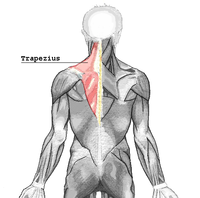
Photo from wikipedia
Origami-based flexible, compliant, and bio-inspired robots are believed to permit a range of medical applications within confined environments. In this article, we experimentally demonstrated an origami-inspired deployable surgical retractor with… Click to show full abstract
Origami-based flexible, compliant, and bio-inspired robots are believed to permit a range of medical applications within confined environments. In this article, we experimentally demonstrated an origami-inspired deployable surgical retractor with the controllable stiffness mechanism that can facilitate safer instrument–tissue interaction in comparison to their rigid counterparts. When controllable negative-pressure is applied to the jammed origami retractor module, it becomes more rigid, increasing its strength. To quantify origami-modules strength further, we demonstrated performances of retractor based on the Daler–Rowney Canford paper (38 grams per square meter (gsm)) and sandpaper of 1000 grit. Experiments on the proposed retractor prototype elucidated sandpaper-based retractor can outperform paper-38-gsm retractor for facelift incision with the width of more than 9 cm. Though 38 gsm Canford paper comprised of thin layers, 16 times lesser in thickness than sandpaper, experiments proved its comparable layer jamming (LJ) performance. We leverage the advantage of the LJ mechanism to tune retractor stiffness, allowing the instrument to hold and separate a facelift incision to mitigate the likelihood of surgical complications. The retractor is equipped with a custom-made printed conductive ink-based fabric piezoresistive tactile sensor to assist clinicians with tissue-retractor interaction force information. The proposed sensor showed a linear relationship with the applied force and has a sensitivity of 0.833 N−1. Finally, cadaver experiments exhibit an effective origami-inspired surgical retractor for assisting surgeons and clinicians in the near future.
Journal Title: Journal of Mechanisms and Robotics
Year Published: 2020
Link to full text (if available)
Share on Social Media: Sign Up to like & get
recommendations!